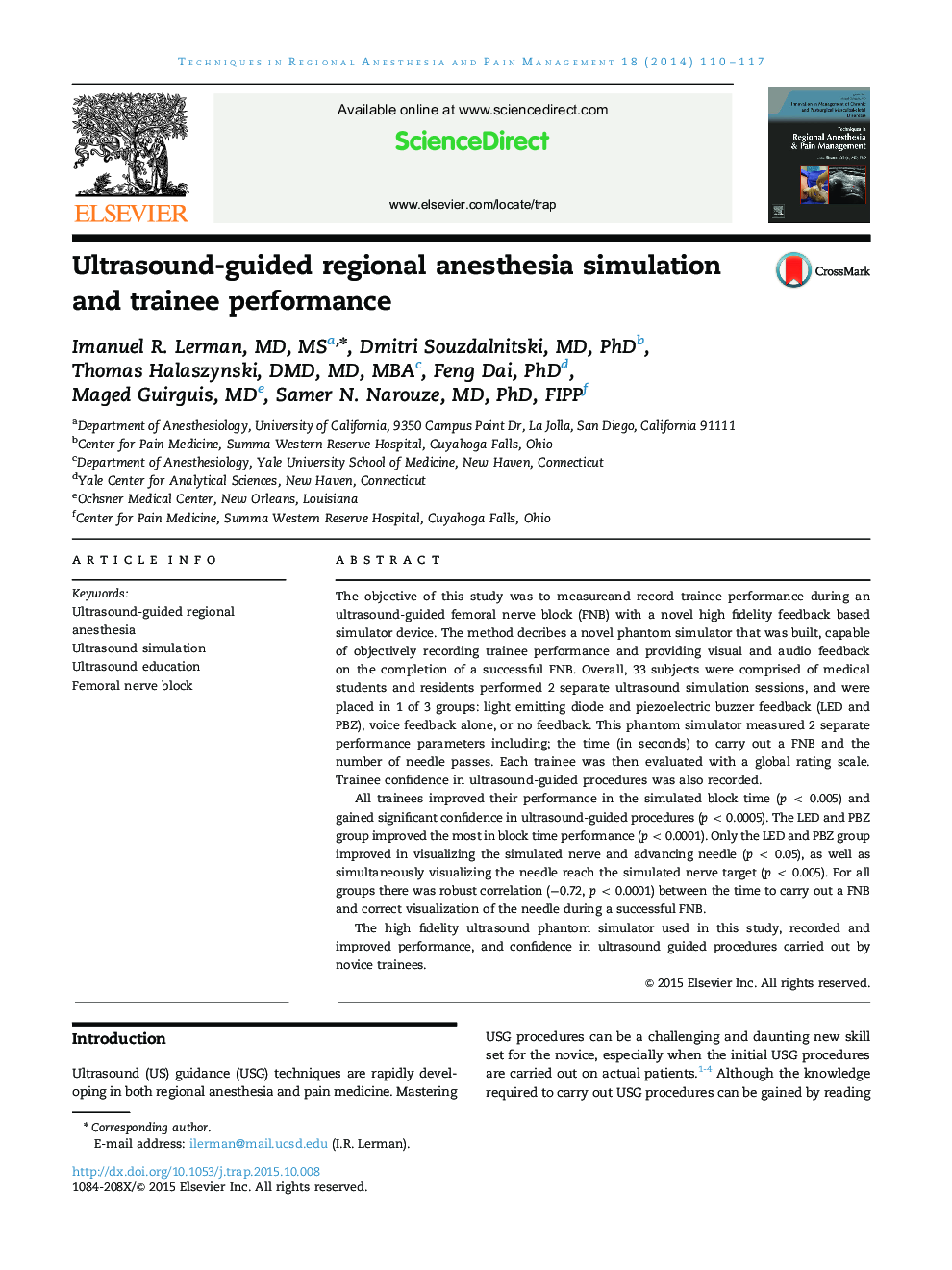| Article ID | Journal | Published Year | Pages | File Type |
|---|---|---|---|---|
| 2772091 | Techniques in Regional Anesthesia and Pain Management | 2014 | 8 Pages |
The objective of this study was to measureand record trainee performance during an ultrasound-guided femoral nerve block (FNB) with a novel high fidelity feedback based simulator device. The method decribes a novel phantom simulator that was built, capable of objectively recording trainee performance and providing visual and audio feedback on the completion of a successful FNB. Overall, 33 subjects were comprised of medical students and residents performed 2 separate ultrasound simulation sessions, and were placed in 1 of 3 groups: light emitting diode and piezoelectric buzzer feedback (LED and PBZ), voice feedback alone, or no feedback. This phantom simulator measured 2 separate performance parameters including; the time (in seconds) to carry out a FNB and the number of needle passes. Each trainee was then evaluated with a global rating scale. Trainee confidence in ultrasound-guided procedures was also recorded.All trainees improved their performance in the simulated block time (p < 0.005) and gained significant confidence in ultrasound-guided procedures (p < 0.0005). The LED and PBZ group improved the most in block time performance (p < 0.0001). Only the LED and PBZ group improved in visualizing the simulated nerve and advancing needle (p < 0.05), as well as simultaneously visualizing the needle reach the simulated nerve target (p < 0.005). For all groups there was robust correlation (−0.72, p < 0.0001) between the time to carry out a FNB and correct visualization of the needle during a successful FNB.The high fidelity ultrasound phantom simulator used in this study, recorded and improved performance, and confidence in ultrasound guided procedures carried out by novice trainees.
